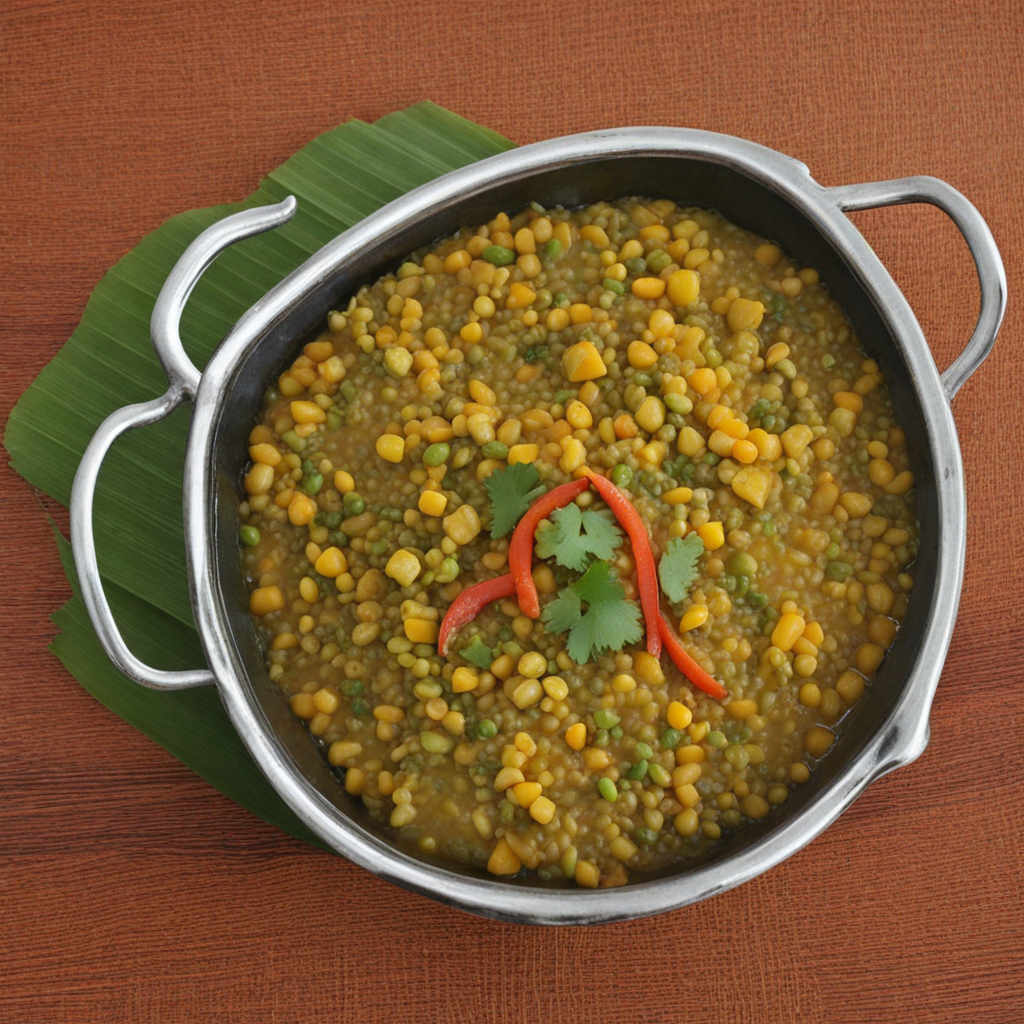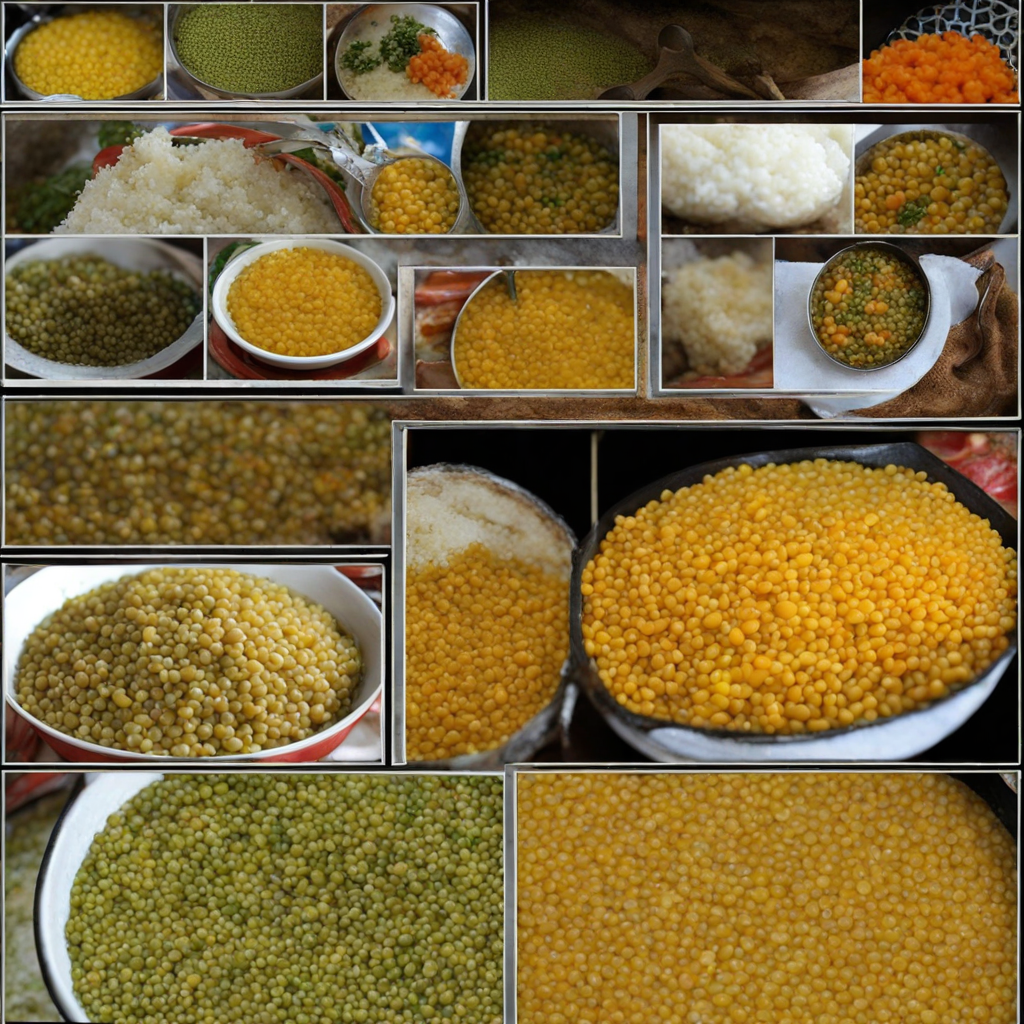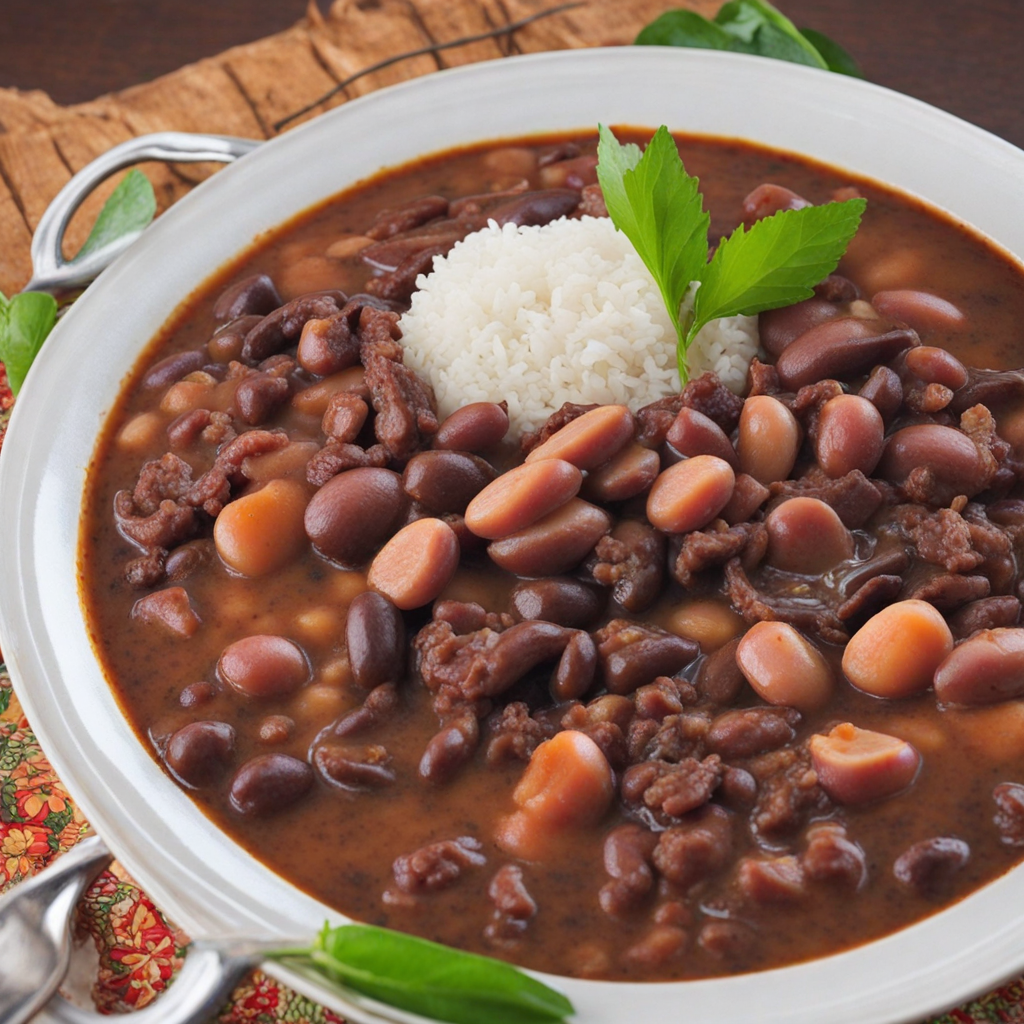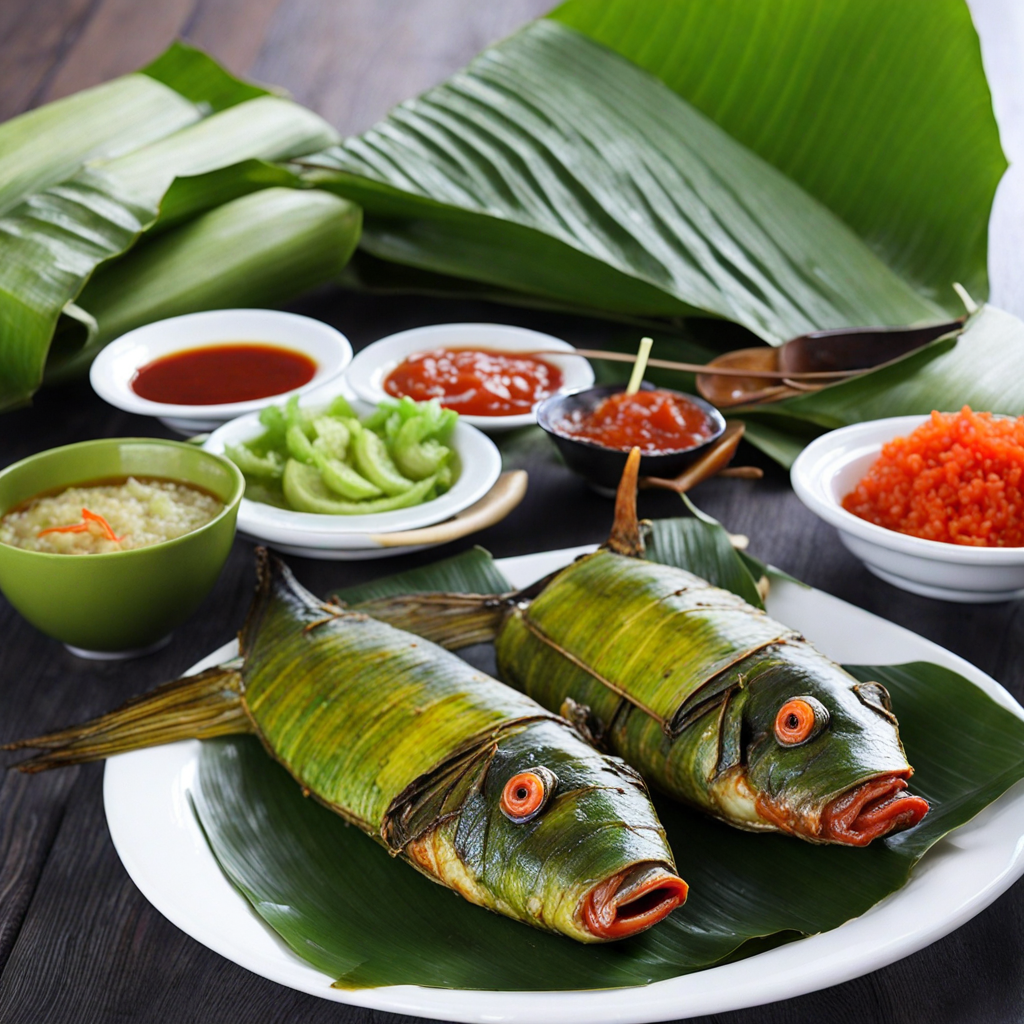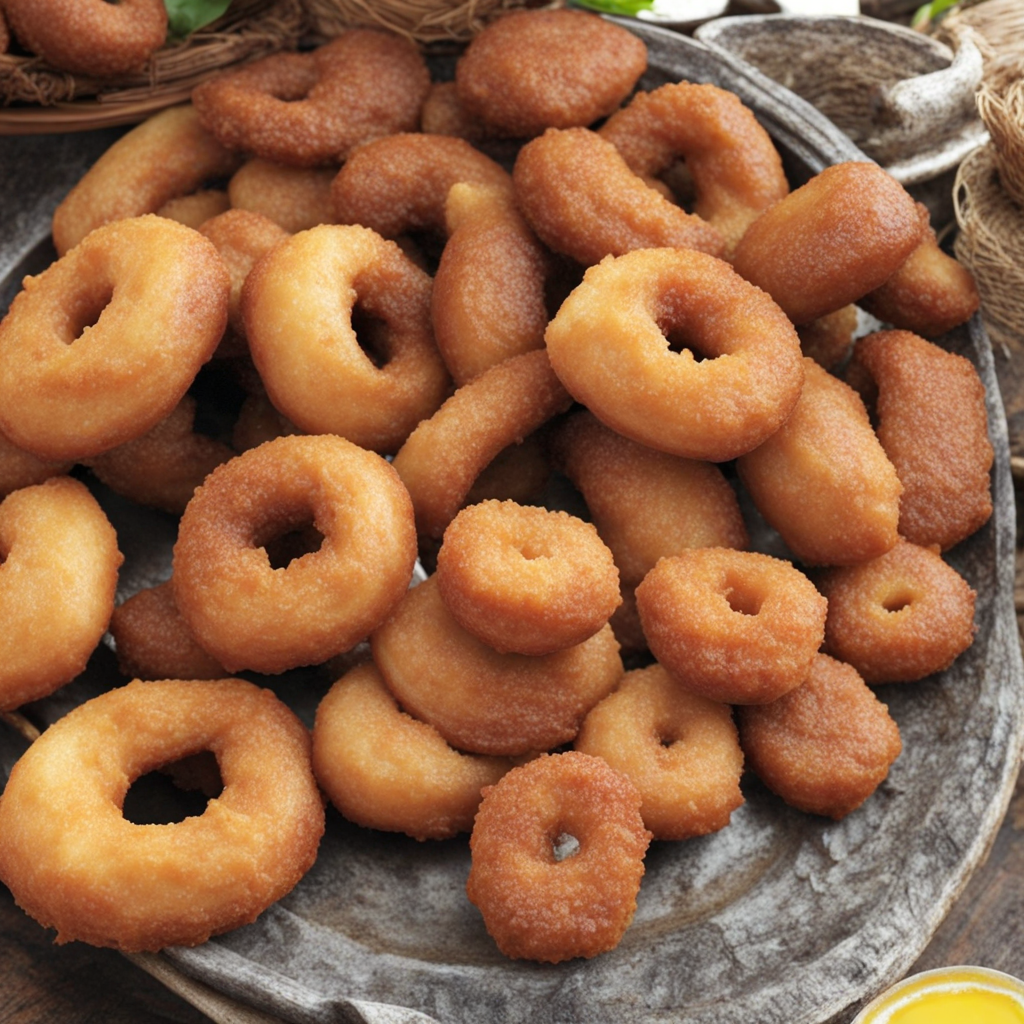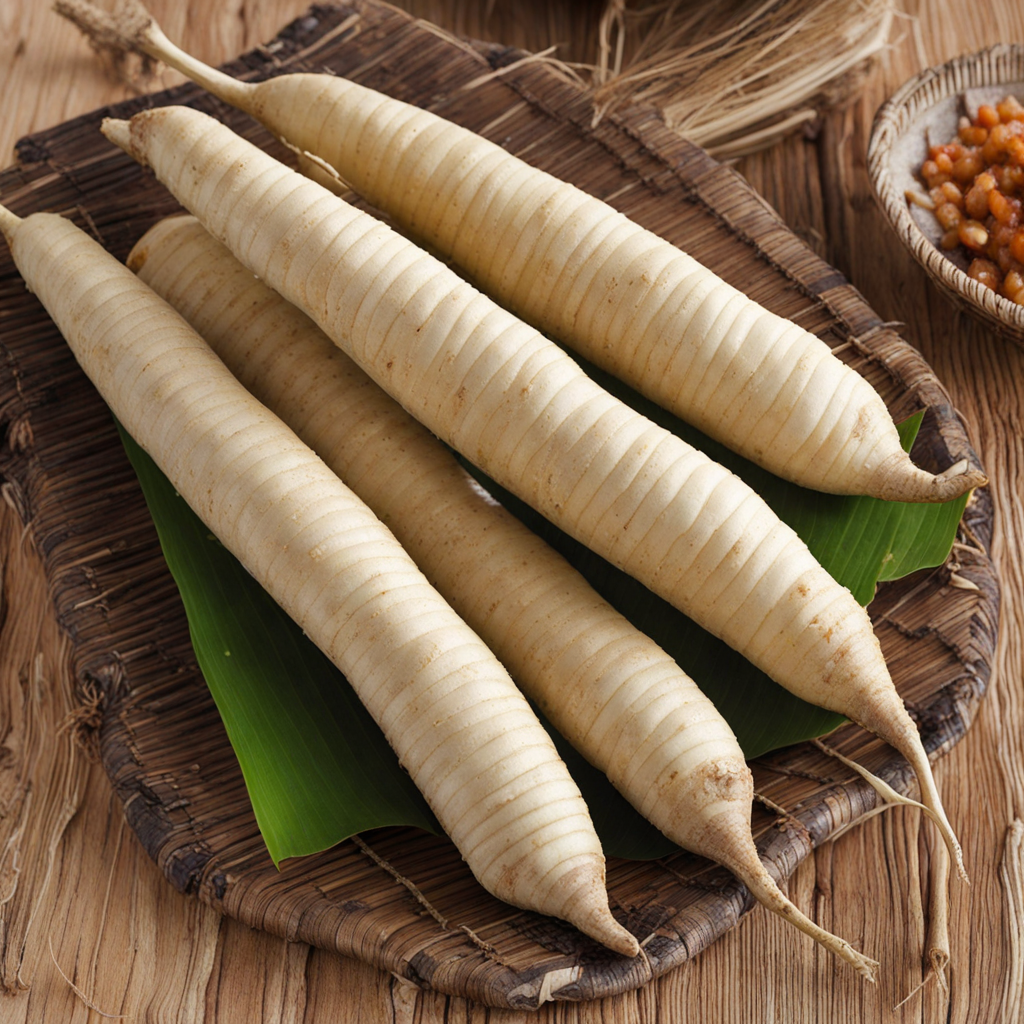Batar Daan
Batar Daan is a traditional dish from Timor-Leste that showcases the rich culinary heritage of this Southeast Asian nation. At its core, Batar Daan features a delightful combination of boiled and mashed corn, which serves as the base for this comforting and hearty meal. The corn is often sourced locally, reflecting the agricultural practices of the region, and is prepared to achieve a creamy consistency that is both satisfying and nutritious. The dish is typically seasoned with a touch of salt, and sometimes enhanced with coconut milk, which adds a subtle sweetness and richness to the overall flavor profile. Accompanying the corn base, Batar Daan is often served with an array of side dishes that can include sautéed greens, grilled or fried fish, or even meat, depending on local preferences and availability. The addition of these accompaniments not only adds layers of flavor but also creates a complete meal that embodies the essence of communal dining, where family and friends gather to enjoy food together. The combination of textures—from the creamy corn to the crispy fish or tender greens—makes for a delightful eating experience. What sets Batar Daan apart is its embodiment of simplicity and the celebration of natural flavors. This dish is not just about nourishment; it's a reflection of the culture and traditions of Timor-Leste. Often enjoyed during celebrations or family gatherings, Batar Daan invites diners to savor the genuine taste of the land, offering a unique opportunity to explore the culinary landscape of this beautiful country. Each bite tells a story of the local ingredients, preparation techniques, and the warmth of Timorese hospitality.
How It Became This Dish
The History of Batar Daan: A Culinary Gem of Timor-Leste #### Origins Batar Daan, a quintessential dish from Timor-Leste, is a vibrant representation of the island's rich cultural tapestry and agricultural heritage. The dish is primarily made from a unique combination of corn, beans, and sometimes pumpkin or other local vegetables. Corn is a staple crop in Timor-Leste, often seen as a symbol of sustenance and resilience for the Timorese people, while beans provide a vital source of protein. The origins of Batar Daan can be traced back to the indigenous agricultural practices of the Austronesian peoples, who are believed to have settled in the region thousands of years ago. These early inhabitants cultivated various crops, adapting their farming techniques to the diverse landscapes of the island. Over centuries, the cultivation of corn and beans became deeply embedded in the culinary traditions of the Timorese, particularly in rural communities where these ingredients were readily available and formed the basis of daily meals. #### Cultural Significance Batar Daan is more than just a dish; it is a cultural artifact that encapsulates the spirit of Timor-Leste. Traditionally served during communal gatherings and festivities, it represents unity and sharing. The preparation and consumption of Batar Daan are often accompanied by rituals and social interactions, reinforcing community bonds. The dish is frequently prepared for celebrations, such as weddings, harvest festivals, and religious observances, symbolizing abundance and gratitude. The significance of Batar Daan is also reflected in the agricultural calendar of Timor-Leste. Corn planting and harvesting are communal activities that involve entire families and villages, fostering a sense of cooperation and solidarity. When the harvest season arrives, the preparation of Batar Daan becomes a joyous occasion, where families come together to celebrate the fruits of their labor. The dish serves as a reminder of the connection between the land, the people, and the cycles of nature. #### Development Over Time As Timor-Leste has navigated its complex history, the preparation and appreciation of Batar Daan have evolved, influenced by various factors including colonization, globalization, and modernization. During the Portuguese colonial period, which lasted for over four centuries, the culinary landscape of Timor-Leste began to diversify. Portuguese influences introduced new ingredients, cooking techniques, and flavor profiles. However, Batar Daan remained a steadfast fixture in the local diet, symbolizing continuity amidst change. In recent years, the dish has seen a revival as Timor-Leste embraces its culinary heritage in the face of globalization. Chefs and home cooks alike are reinterpreting Batar Daan, experimenting with variations that incorporate contemporary culinary techniques while staying true to its roots. The dish has gained recognition beyond the borders of Timor-Leste, as the country seeks to promote its cuisine on international platforms. Batar Daan is also gaining traction in the realm of food tourism, with travelers seeking authentic experiences that connect them to local cultures. Culinary tours often highlight traditional dishes like Batar Daan, allowing visitors to engage with the preparation process and understand its cultural significance. This growing interest has led to a renewed appreciation for indigenous ingredients and traditional cooking methods, emphasizing sustainability and the importance of preserving culinary heritage. #### Ingredients and Preparation At its core, Batar Daan is a humble dish, yet its preparation is steeped in tradition. The primary ingredients—corn and beans—are typically harvested fresh from local farms. The corn is often ground into a coarse flour, while the beans are boiled or cooked separately until tender. Depending on regional variations and personal preferences, additional ingredients such as pumpkin, leafy greens, or spices may be included, enhancing the dish's flavor and nutritional value. The preparation of Batar Daan is often a communal affair. Families gather to shell corn, sort beans, and prepare the ingredients. The cooking process usually involves boiling the corn and beans together in a large pot until they reach a creamy consistency. Traditionally, the dish is served warm, often accompanied by a sprinkle of salt or a drizzle of coconut milk, adding richness and depth of flavor. In some regions, Batar Daan is enjoyed with grilled fish or meat, showcasing the harmony between agricultural and pastoral practices in Timor-Leste. This practice highlights the importance of biodiversity in the local diet, as families leverage their surroundings to create balanced meals. #### Modern Interpretations As Timor-Leste continues to evolve, so too does Batar Daan. Modern interpretations of the dish are emerging in urban areas, where chefs are infusing international flavors and techniques into this beloved classic. For instance, some restaurants are experimenting with variations that incorporate spices like turmeric or chili, giving Batar Daan a contemporary twist while respecting its traditional roots. Social media has played a significant role in the revival of interest in Batar Daan and Timorese cuisine as a whole. Food bloggers and influencers are showcasing the dish, sharing recipes and stories that celebrate its cultural significance. This digital visibility has sparked curiosity among younger generations, encouraging them to reconnect with their culinary heritage. Moreover, the push for sustainable eating practices has also influenced the way Batar Daan is prepared and consumed. As more people become aware of the environmental impact of food production, there is a growing emphasis on using locally sourced ingredients and traditional farming methods. This shift not only supports local farmers but also strengthens the cultural connection to food, ensuring that dishes like Batar Daan remain relevant in the modern culinary landscape. #### Conclusion Batar Daan is a dish that embodies the essence of Timor-Leste: a celebration of community, resilience, and cultural heritage. Its origins rooted in indigenous agricultural practices, its cultural significance in communal life, and its evolution in response to changing times all contribute to its status as a beloved national dish. As Timor-Leste continues to embrace its culinary identity, Batar Daan stands as a testament to the enduring power of food to connect people, preserve traditions, and celebrate the richness of life.
You may like
Discover local flavors from Timor-leste


